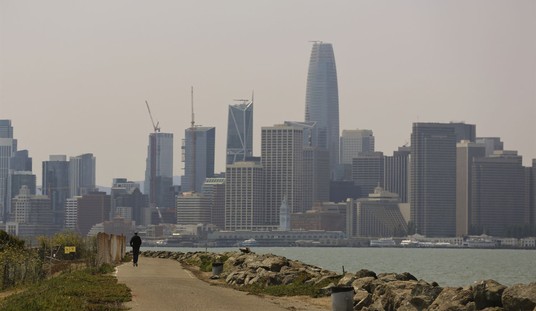Here’s the media and OWS in microcosm. The big “Occupy” story over the weekend involved a mob in D.C. temporarily trapping people inside an Americans for Prosperity event by blocking the doors. The cops had to be called and a Daily Caller reporter on the scene was sufficiently afraid for her safety that she said later she no longer feels comfortable among the protesters. Washington’s police chief issued a statement afterward reporting five injuries and declaring, “That is no longer a peaceful protest. Demonstrators have become increasingly confrontational and violent toward uninvolved bystanders and motorists. Demonstrators have also jeopardized the safety of their own children by using them in blockades.” In other words, according to the top cop in America’s capital, the “99 percent” have become a menace. What’s the local liberal paper to do? Well, if you’re WaPo, you roll out an embarrassing soft-focus package — in the “Style” section, no less — about the “vibrant brand of urbanism” that’s been created by unwashed people sleeping on pavement in tents. In the context of the AFP clusterfark, it’d be like doing a fashion feature on balaclavas worn by WTO protesters after a spirited weekend spent smashing windows. A taste:
Whether the Occupy movement, which has taken over parks in cities across the country, fizzles or grows, whether it has resonance and can translate its message into concrete change, are political questions. But looked at solely as an aesthetic and cultural phenomenon, it has deep roots in ideas with established pedigrees in the world of art and architecture. Its anti-consumerist ethos, its impatience with the media and its love of theatrical intervention in city life make it a direct heir of the Situationists, a radical European avant-garde collective begun in the late 1950s with ideas that remain influential today…
But the Occupy movement has also brought into the heart of the nation’s capital something even more haunting, what might be called the “urban uncanny.” Some of the most cherished cities in the world, including Vienna, owe their early development in part to the encampments set up by occupying Roman soldiers. Other major metropolitan areas, such as Port-au-Prince and New Orleans, devolved more or less into camps after disasters struck. The urban encampment hints at the beginning and the end of urban life, its nascence and dissolution. It’s a powerful display, a mix of both admonition and promise, suggesting not only that we could all be homeless but that we could also live better, differently, more communally.
There’s a cutesy feature too on their little homegrown library; maybe the Daily Caller should swing by and see if the librarian starts yelling “F*** Michelle Fields” at their reporter like the rest of the gentlemen scholars there do. In other words, at a moment when cops are warning citizens that there’s a dangerous element among them, WaPo’s troweling on intellectual gravitas by treating a dingy campsite as some sort of architectural renaissance. It’s an attempt to romanticize and legitimize “occupation” tactics even as formerly sympathetic city governments have reached their breaking point with violent crime and drug use and disease and even the occasional shooting at camp sites. Simple question: How can it be a public nuisance if it’s art?
For your viewing pleasure, here’s a brilliant bit of public theater in the Brechtian tradition. By which I mean, a bunch of OWSers chanting at Michele Bachmann during her speech.








Join the conversation as a VIP Member